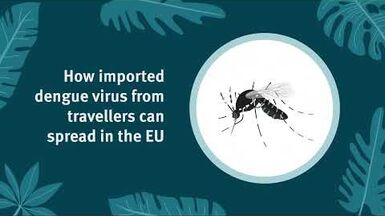Diagnostics
Optimal specimens for the detection of current infection with SARS-CoV-2 are collected from the upper respiratory tract by:
- nasopharyngeal swab (preferred sample);
- oropharyngeal swab;
- nasopharyngeal aspirate;
- nasal wash;
- saliva sampling.
If the patient is hospitalised or in intensive care, a specimen can also be collected from the lower respiratory tract, for example by:
- bronchoalveolar lavage;
- endotracheal aspirate;
- expectorated sputum.
Respiratory specimen collection from the upper and especially lower respiratory tract should be performed under strict infection prevention and control measures (to avoid infection from aerosols) in accordance with ECDC guidance on Infection prevention and control and preparedness for COVID-19 in healthcare settings [36].
Specimens for laboratory testing should be collected early during the infection and within the first five days following the onset of symptoms. All specimens can be stored at 2 to 8°C for up to 48 hours after collection. For handling or shipping after 48 hours, storage at -70°C is recommended [37].
There are three main types of detection assays relevant for COVID-19 diagnostic testing:
- Nucleic acid tests detect the presence of viral RNA – typically, these use an amplification step based on reverse transcriptase polymerase chain reaction (RT-PCR), and are called Nucleic Acid Amplification Tests (NAATs);
- Antigen tests detect the presence of a viral antigen, typically part of a surface protein;
- Antibody tests, also known as serological tests, detect the presence of antibodies generated against SARS-CoV-2 [38].
Both NAATs and antigen tests can be used to detect ongoing infection [37]. Real-time RT-PCR is the gold standard for the detection of COVID-19 and provides both a qualitative result (detected/not detected) and a quantitative result in the form of a cycle threshold (Ct) value (number of amplification cycles required for the detection signal to cross the background level – i.e. to generate a positive result).
Antibodies against SARS-CoV-2 become detectable typically 10-14 days after infection, meaning that antibody tests are only useful to confirm a prior infection, and a positive result does not imply protective immunity against SARS-CoV-2 reinfection [39]. Antibodies against the spike protein also become detectable after vaccination against SARS-CoV-2, therefore attribution of positive serological tests to previous infections should be done with caution due to high vaccine coverage within the general population.
For the reasons outlined above, a negative serological test cannot exclude an infection with SARS-CoV-2 in the previous two weeks. Antibody levels are best detected in the serum (or plasma, in some tests) two to four weeks after an acute phase of infection or vaccination.
Several commercial detection assays for SARS-CoV-2 RNA or antigen, and serological assays for SARS-CoV-2 specific antibodies are available on the market with CE-IVD marking. Information on these assays can be found in the JRC COVID-19 In Vitro Diagnostic Devices and Test Methods Database of the European Commission.




